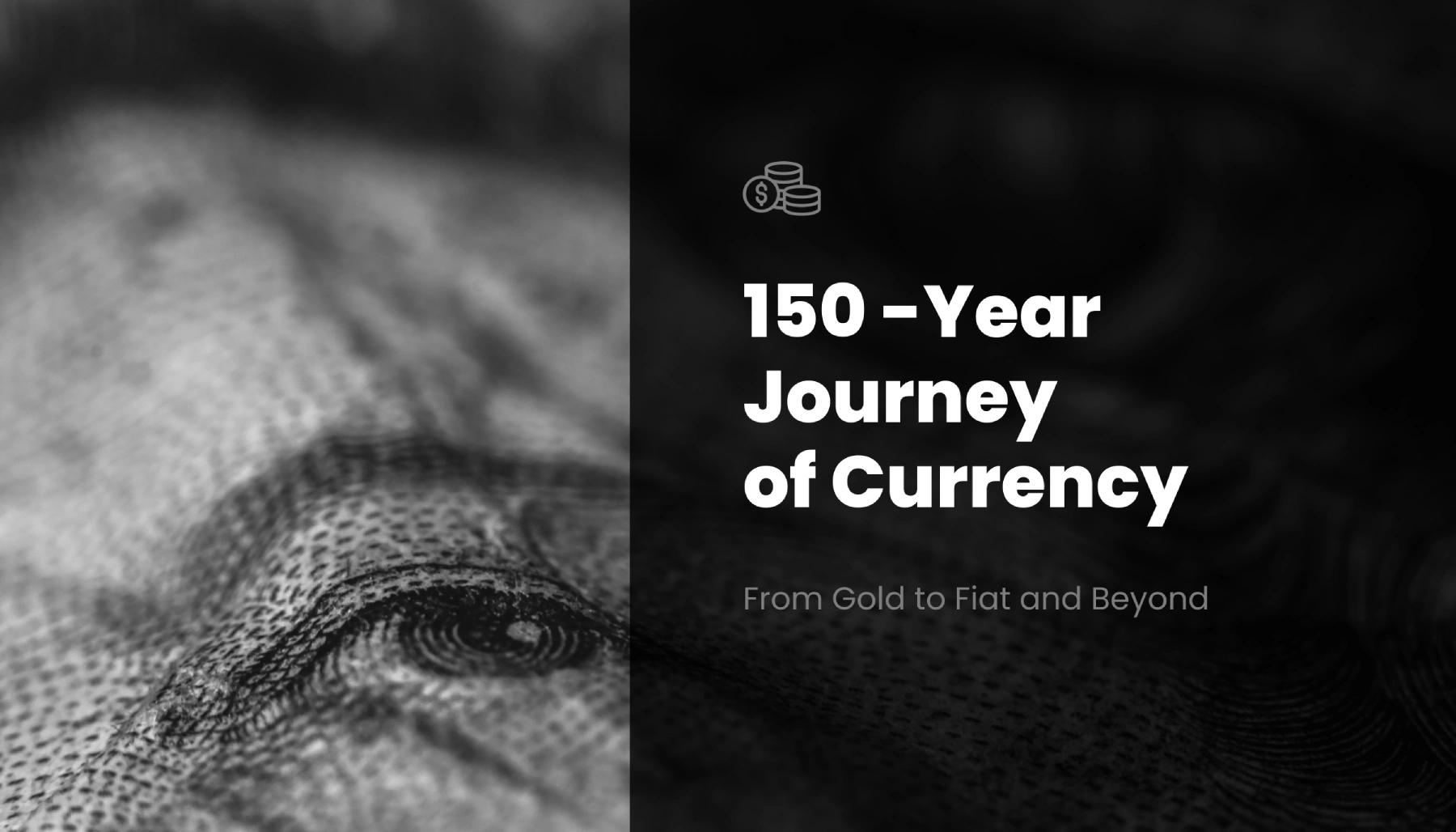The story of the transitional United States dollar from money that is essentially based on gold to the fiat standard which we know today is one driven by wars, economic policies, and the international dynamism of the situational world. Through this analysis, we will explore the connected patterns of stability, crisis, and the possibility of achieving economic growth through thoughtful policies and sound money solutions.
The Classical Gold Standard: 1873–1914
In 1873, Germany introduced the classic gold standard, this meant that the currency was backed by a fixed amount of gold on a 1:1 ratio, hence, the monetary system became a key part of the national treasury. The gold-backed system stabilized the global foreign exchange rates and countries could trade on the assurance that the currencies were pegged to a physical asset. However, major nations including the United States, France, and Germany had to abandon the gold standard when World War I broke out in 1914. This transition marked the start of a global monetary system that was more flexible but less stable.
The Interwar and Fractional Reserve Policies
Gold exchange was the theme in the interwar years as countries rolled out this method. Unlike the traditional gold-backed system, this one operated with only partial reserves and many times only a small fraction of mined gold was needed to back all the dollar notes in circulation. In the United States, the Federal Reserve Act of 1932 made it possible for the Federal Reserve to keep a 40% reserve ratio which means that the Federal Reserve could print $100 backed by only $40 of gold. As currency issuance outpaced gold reserves, the stage was set for increasingly lenient monetary policies.
World War II and the Economic Role of the United States
Prior to and during World War II, the United States was largely the country to benefit through the exports of commodities, food products, and other essential supplies to the war-torn European nations. While the European powers were busy with costly wars, the United States avoided military confrontation, attempting to stay true to isolationist policies, only joining the European front in August of 1942. During this period, the United States ramped up wartime production without engaging in actual combat, allowing its economy to gain significant strength and momentum. During this period, Europe was paying the United States with Gold as a result the United States was able to acquire two-thirds of the global gold supply which made it the primary lender of the world and thus was able to give out loans to other countries in U.S. dollars.
Bretton Woods and the Post-War Dollar Standard (1944)
In 1944, 730 delegates from 44 nations came together at Bretton Woods, New Hampshire to discuss a new money structure that was based on the U.S. dollar becoming the global reserve currency. Under the Bretton Woods system, the dollar’s convertibility to gold was fixed at a rate of $35 per ounce and most currencies were pegged to the U.S. dollar at fixed exchange rates. The agreement gave the United States a comparative economic advantage and effectively made the U.S. dollar “as good as gold”. As a result, the United States became the major cornerstone of the international monetary system. As other international conflicts such as the Korean and Vietnam wars were happening, the U.S started to print more money to support these efforts removing the reserve ration. Combined with the Johnson’s Great Society program which aimed to expand and export the dollar all over the world, setting up the beginning of the Dollar standard.
The Breakdown of the Bretton Woods System (1960s–1971)
As the 1960s passed, other countries began to doubt the dollar’s reliability. French President Charles de Gaulle was among the first leaders to make his concerns public, as he noted how the United States was completely out of sync with the gold standard, with the dollar supply increasing substantially higher than the United States gold reserves. France began to swap its U.S. dollar holdings for gold and other countries followed suit. Between 1959 and 1971, the United States lost 50% of its gold reserves, while the dollar supply expanded twelvefold. The United States was essentially a bank that did not have enough funds to return to its customers when they went to withdraw cash. The confidence crisis reached its peak in the summer of 1971, and President Nixon, fearing that the situation could get out of control, made a momentous decision to untie the dollar from gold completely on August 15, 1971. For the first time in history, the world’s currencies, led by the U.S. dollar, were fiat currencies—currencies that derive their value from trust in government rather than in true assets.
From Fiat Currency to Modern Economic Tensions
The change to a fiat currency system introduced a new dimension to the global financial system. Without a gold backing, the Federal Reserve was granted more freedom in managing the monetary supply. However, the risks of inflation and debt remained an issue and became even more critical. During the early 2000s, some circumstances further eroded the supremacy of the dollar. Iraq was also among the countries that challenged the dollar’s role as a reserve currency, as it started selling oil in euros, thereby showing a shift in the oil trade away from the dollar. In order to address the economic crisis of 2008, The Federal Reserve infused $1.25 trillion into the economy as the first Quantitative Easing (QE) program, this was followed by additional rounds (QE2 in 2010 and QE3 in 2012) and therefore, the money supply was increased substantially.
During this time, countries in various trade agreements began designating some reserve currency alternatives to the dollar. China and Russia started bilateral trade, where they conducted transactions in each other’s currencies instead of dollars. The same coordination was made between Iran and India, China and Brazil, among others. Countries also insisted on the return of the repatriation of their gold reserves from storage in the United States and other places. Germany repatriated 150 tons of gold from the New York Fed, and movements demanding the return of gold reserves occurred in countries such as Venezuela, Switzerland, and Austria.
BRICS and dollar alternatives: A New Era
With the U.S. dollar in continuous print and circulation worldwide, many economies feel the ripple effect. BRICS countries (Brazil, Russia, India, China and South Africa) and their allies looking to reduce dependence on the U.S. dollar, their ever-growing dissatisfaction has been rooted in its global dominance in transactions, which they believe centralizes power and exposes them to Western sanctions. BRICS leaders have long called for de-dollarization, urging more trade in local currencies or even the establishment of a possible common BRICS currency.
This is an increasingly uncomfortable shift for Western powers determined to keep the prevailing standard in dollars. A highly notable recent move was from the 47th President of the United States, Donald Trump, who demanded a number of BRICS countries not to create any new currency or support alternatives to the U.S. dollar and threatened 100% tariffs in case of compliance.
Other countries have been considering alternatives; Some proposing a return to the gold standard while others to modern systems, such as Bitcoin. We are seeing a very new beginning in the history and development of money and value. The global financial order has begun to shift toward decentralization and diversification.
A Look Ahead: Will History Repeat?
The dollar is still the world’s reserve currency, but history would suggest that, in the long run, fiat systems are ultimately susceptible to crises in confidence. Gold and silver have reemerged throughout 5,000 years as trusted monetary forms. The fiat system managed to achieve unparalleled economic growth, but repeated bouts of economic stress point to one necessary step in restoring financial stability: turning back toward principles of sound money. The continued global conflicts have increased gold repatriation demands, coupled with options for monetary reform, speak to a belief in tangible value—combined with the introduction of digital currencies whether as a hedge, a standard, or the next step in monetary history.

